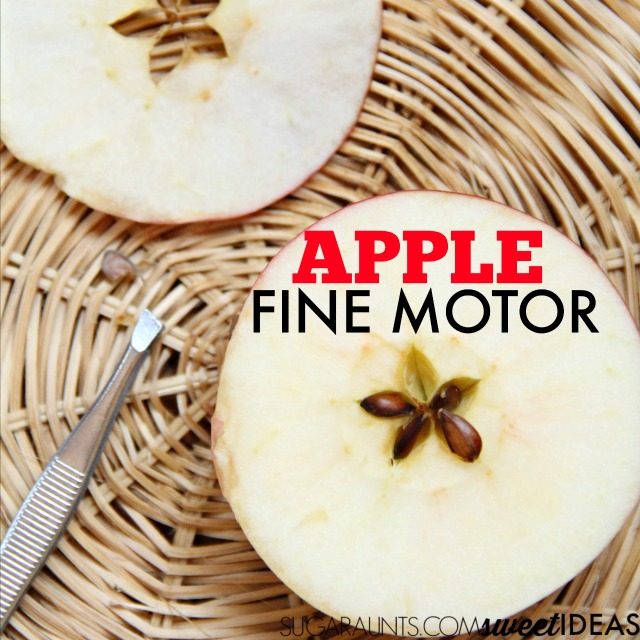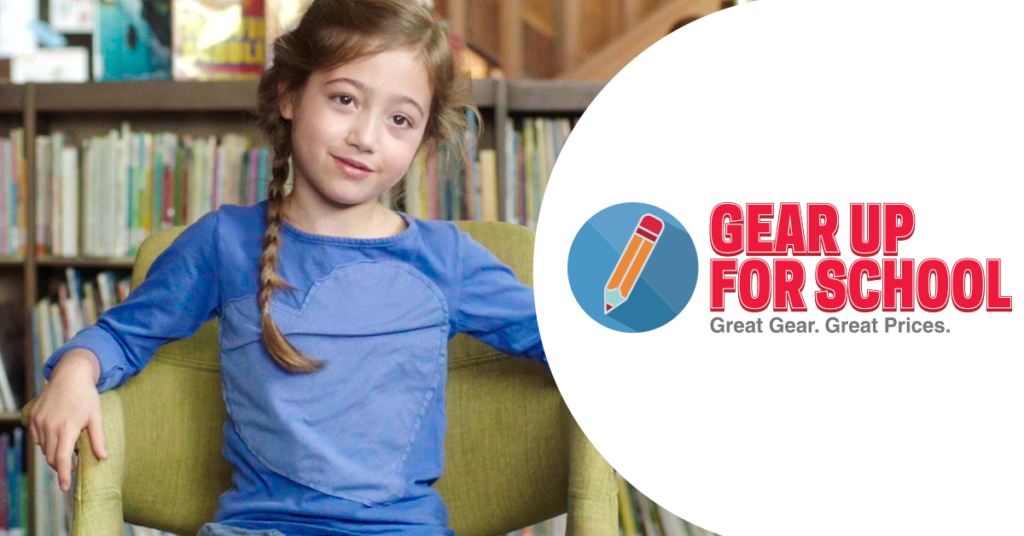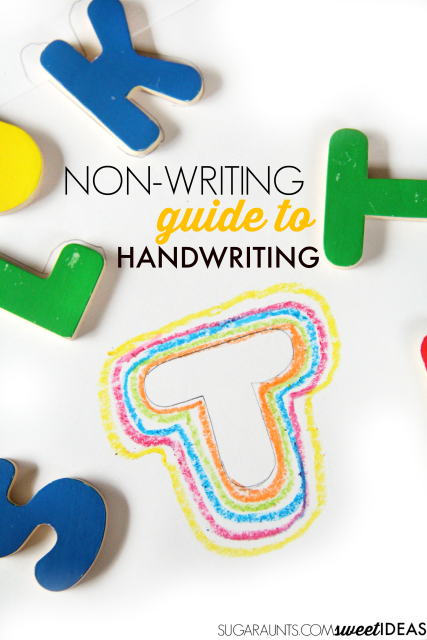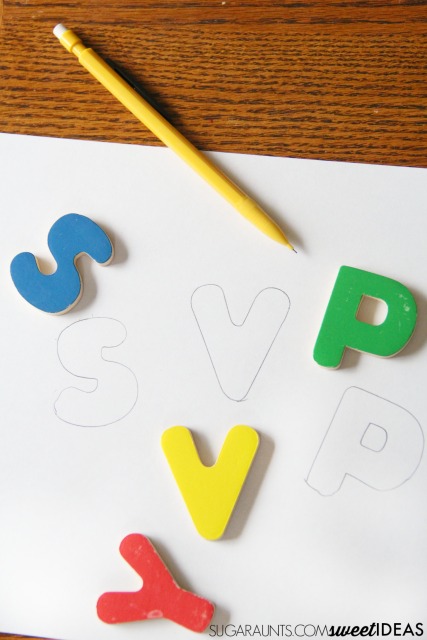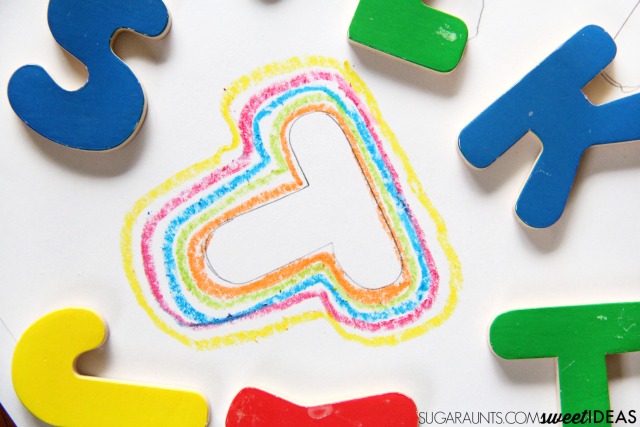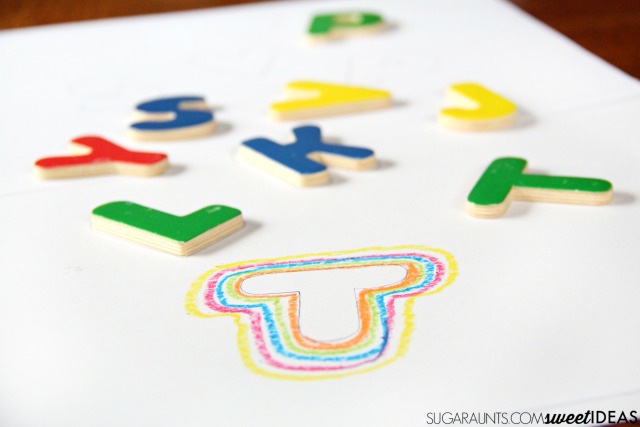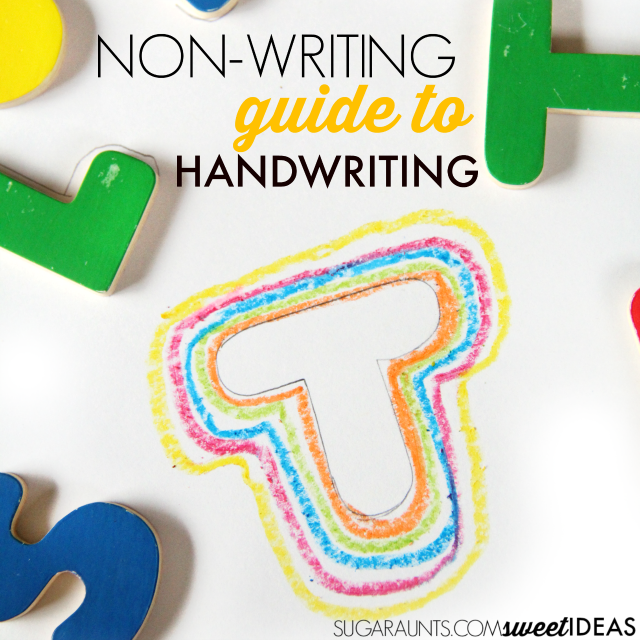We decided to explore an apple’s seeds noticing it’s details and talking about how every little thing that we do can be inspiring. We cut an apple in half and practiced a little fine motor skills (something we LOVE adding to creative play and learning activities!) and used tweezers to pull the seeds from the apple.
Using tweezers to pull out the seeds is a great way to practice tripod grasp that is needed for proper grip on a pencil. The action of squeezing and holding tweezers requires use of the intrinsic muscles of the hands, which are needed for endurance in coloring, writing, and manipulating clothing fasteners (all school-based activities that our kids will be doing this school year!)
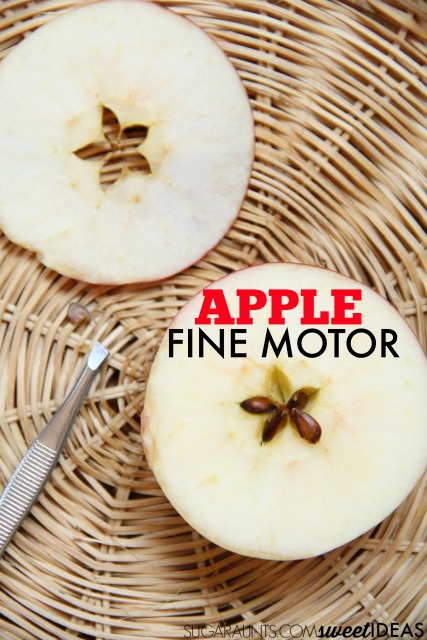
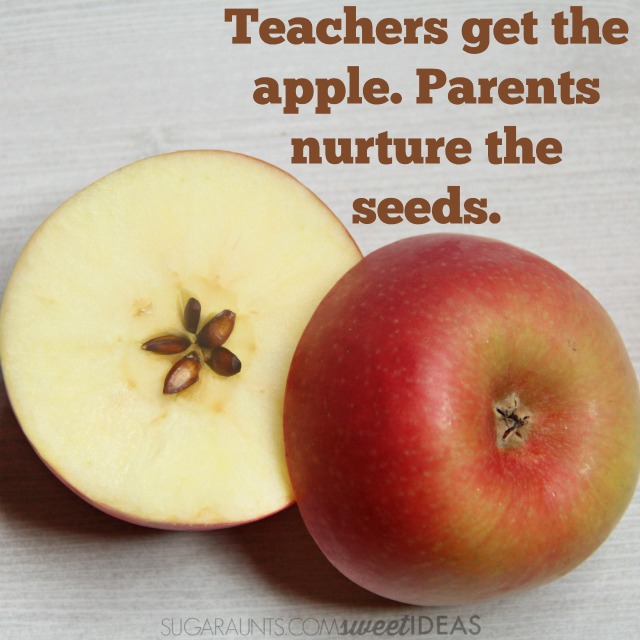
Parenting and all of the details that goes into it is kind of like an apple and it’s seeds. They are so small but they are very much there. They are something small that grows into that huge and productive apple tree.
Fall and back-to-school seem to bring with it an apple theme. There isn’t a classroom out there that probably doesn’t have an apple in it somewhere, whether on a bulletin board, a desktop pencil holder, or a door decoration. Fall means back-to-school and back-to-school means an apple for the teacher!
Apple Fine Motor Seed Activity
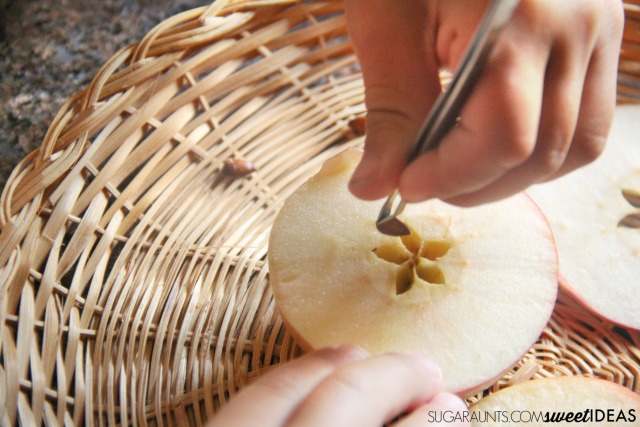
While manipulating the tweezers to pick up and position the seeds from the apple, kids can develop and build their eye-hand coordination skills which are needed for reading, writing, performing hands-on learning activities, and performing tasks like turning the pages in a book or manipulating papers and books in a desk.
What a great Fall themed back-to-school project this apple activity is!
While my daughter and I worked on this fine motor apple activity, we chatted about the seeds and how they grow from tiny little things into big apple trees.
We talked about our family and how it’s grown and how each of us in the family continues to grow. We even talked about the jobs and responsibilities that each of us has in our family. I asked her about what she thought about how we do those jobs. There were some funny responses: “Moms work hard. You do a lot of laundry”, and “She does a lot of making messes” (referring to her two year old sister)!
They notice every little thing. It’s those little details of life that don’t go unnoticed. They pick up on words, facial expressions, phrases, feelings, and social interactions. Then there are the routines. If one little detail of a typical daily routine is omitted, they notice. When day to day household jobs and activities happen, they notice.
Our kids are perceptive. They see all and they are learning. They are watching us and they are learning from us. It can be overwhelming as a parent to have these little people who are growing and learning based on what they see us do. It can be a hard job to raise children who are kind, truthful, and generous. Being a parent is a big responsibility.
It can also be amazing and beautiful to know that our littlest actions are inspiring our kids to be great.
Knowing that back-to-school means a change in routine from the lazy days of summer to even more “jobs” for parents (Helloooo, packing lunches, washing school clothes, preparing school supplies, signing 235 school forms, and helping with homework!), it can be even MORE overwhelming to head back into the school year.
Have you ever wondered what your children thought about you and all of the sometimes overwhelming details that are part of your job as Mom or Dad? The kids in this adorable video found out:
I love the antidotes by the parents in the video, especially knowing that the crumbs, messes, and toys that are taking over the house really WILL be gone someday and the house WILL be clean and quiet.
What is your favorite part of the video?
Share it with your friends!
Full disclosure: This post is sponsored by Office Depot® OfficeMax® and The Motherhood. All opinions are my own.
